Polar Capital Technology Trust plc (the "Company"): The Company is an investment company with investment trust status and its shares are excluded from the Financial Conduct Authority’s (“FCA”) restrictions on the promotion of non-mainstream investment products. The Company conducts its affairs, and intends to continue to conduct its affairs, so that the exemption will apply.
The Company is an Alternative Investment Fund under the EU's Alternative Investment Fund Managers Directive 2011/61/EU as it forms part of UK law by virtue of the European Union (Withdrawal) Act 2018.
The Investment Manager: Polar Capital LLP is the investment manager of the Company (the "Investment Manager"). The Investment Manager is authorised and regulated by the FCA and is a registered investment adviser with the United States' Securities and Exchange Commission.
Key Risks
- Investors' capital is at risk and there is no guarantee the Company will achieve its objective.
- Past performance is not a reliable guide to future performance.
- The value of investments may go down as well as up.
- Investors might get back less than they originally invested.
- The value of an investment’s assets may be affected by a variety of uncertainties such as (but not limited to): (i) international political developments; (ii) market sentiment; and (iii) economic conditions.
- The shares of the Company may trade at a discount or a premium to Net Asset Value.
- The Company may use derivatives which carry the risk of reduced liquidity, substantial loss and increased volatility in adverse market conditions.
- The Company invests in assets denominated in currencies other than the Company's base currency and changes in exchange rates may have a negative impact on the value of the Company's investments.
- The Company invests in a concentrated number of companies based in one sector. This focused strategy can lead to significant losses. The Company may be less diversified than other investment companies.
- The Company may invest in emerging markets where there is a greater risk of volatility than developed economies, for example due to political and economic uncertainties and restrictions on foreign investment. Emerging markets are typically less liquid than developed economies which may result in large price movements to the Company.
Important Information
Not an offer to buy or sell: This document is not an offer to buy or sell or a solicitation of an offer to buy or sell any security, and under no circumstances is it to be construed as a prospectus or an advertisement. This document does not constitute, and may not be used for the purposes of, an offer of the securities of, or any interests in, the Company by any person in any jurisdiction in which such offer or invitation is not authorised.
Information subject to change: Any opinions expressed in this document may change.
Not Investment Advice: This document does not contain information material to the investment objectives or financial needs of the recipient. This document is not advice on legal, taxation or investment matters. Prospective investors must rely on their own examination of the consequences of an investment in the Company. Investors are advised to consult their own professional advisors concerning the investment.
No reliance: No reliance should be placed upon the contents of this document by any person for any purposes whatsoever. None of the Company, the Investment Manager or any of their respective affiliates accepts any responsibility for providing any investor with access to additional information, for revising or for correcting any inaccuracy in this document.
Performance and Holdings: All data is as at the document date unless indicated otherwise. Company holdings and performance are likely to have changed since the report date. Company information is provided by the Investment Manager.
Benchmark: The Company is actively managed and uses the Dow Jones Global Technology Index (total return, Sterling adjusted) as a performance target. The benchmark is considered to be representative of the investment universe in which the Company invests. The performance of the Company is likely to differ from the performance of the benchmark as the holdings, weightings and asset allocation will be different. Investors should carefully consider these differences when making comparisons. Further information about the benchmark can be found at: https://www.spglobal.com/spdji/en/indices/equity/dow-jones-us-technology-index/#overview.
Third-party Data: Some information contained in this document has been obtained from third party sources and has not been independently verified. Neither the Company nor any other party involved in compiling, computing or creating the data makes any warranties or representations with respect to such data, and all such parties expressly disclaim all warranties of originality, accuracy, completeness, merchantability or fitness for a particular purpose with respect to any data contained within this document.
Country Specific Disclaimers
United States: The information contained within this document does not constitute or form a part of any offer to sell or issue, or the solicitation of any offer to purchase, subscribe for or otherwise acquire, any securities in the United States or in any jurisdiction in which such an offer or solicitation would be unlawful. The Company has not been and will not be registered under the United States Investment Company Act of 1940, as amended (the “Investment Company Act”) and, as such, the holders of its shares will not be entitled to the benefits of the Investment Company Act. In addition, the offer and sale of the Securities have not been, and will not be, registered under the U.S. Securities Act of 1933, as amended (the “Securities Act”). No Securities may be offered or sold or otherwise transacted within the United States or to, or for the account or benefit of U.S. Persons (as defined in Regulation S of the Securities Act). In connection with the transaction referred to in this document the shares of the Company will be offered and sold only outside the United States to, and for the account or benefit of non-U.S. Persons in “offshore- transactions” within the meaning of, and in reliance on the exemption from registration provided by Regulation S under the Securities Act. No money, securities or other consideration is being solicited and, if sent in response to the information contained in this document, will not be accepted. Any failure to comply with the above restrictions may constitute a violation of such securities laws.
Further Information about the Company: Investment in the Company is an investment in the shares of the Company and not in the underlying investments of the Company. Further information about the Company and any risks can be found in the Company’s Key Information Document, the Annual Report and Financial Statements and the Investor Disclosure Document which are available on the Company's website, found at: https://www.polarcapitaltechnologytrust.co.uk.



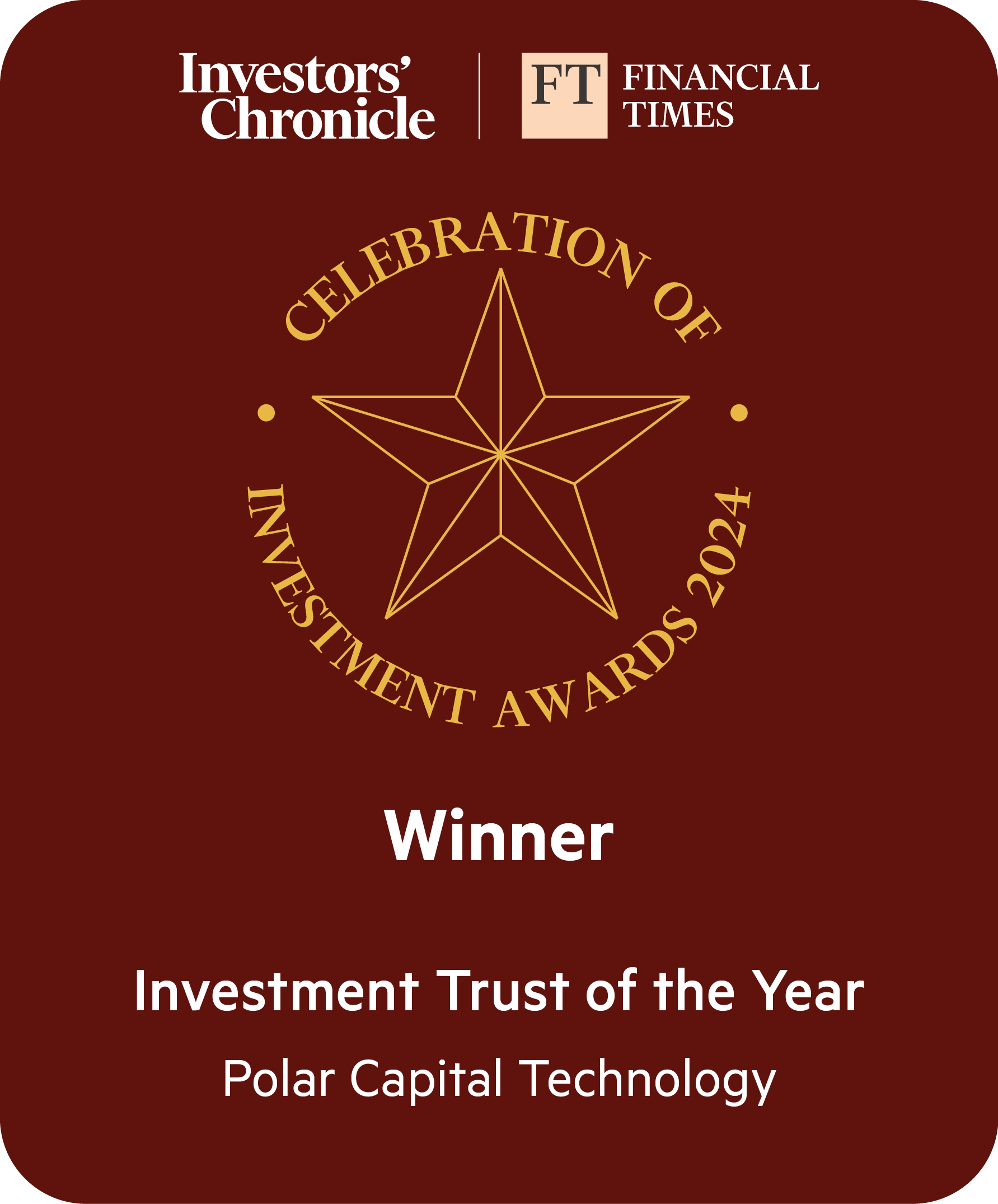
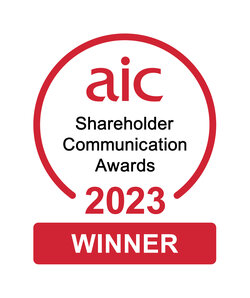
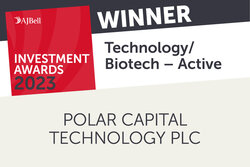
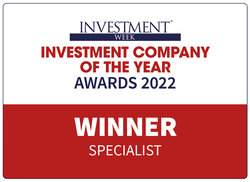
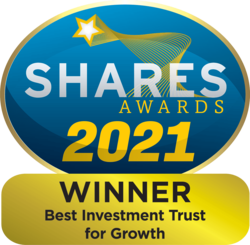


Fund Manager Commentary As at 31 October 2025
Key events
Market review
Global equities continued to rally in October, with the MSCI All Country World Net Total Return Index gaining +4.8%. The S&P 500 Index reached new highs, rising +4.9% to deliver a sixth consecutive monthly gain for the first time since 2021. The DJ Euro Stoxx 600 Index advanced +3.1% (all returns in sterling terms). A new government in Japan saw the Nikkei record its best month in 35 years.
Modest headline gains masked an eventful month. On 10 October, the S&P 500 fell -2.7%, its worst single-day decline since April 2025, after President Trump threatened a “massive” tariff hike on Chinese imports (from 30% to 130%) in retaliation to China’s new export controls on rare earth minerals and other strategic materials. Although Trump briefly suggested he might skip a planned summit with President Xi later in the month, he ultimately reversed course. The détente saw equity markets rally into month-end, despite private credit market concerns following two auto-related companies, First Brands and Tricolor Holdings, filing for bankruptcy, while some regional banks reported losses tied to troubled loans. These developments raised fears of broader credit deterioration although, for now, such issues appear contained.
The US federal government shut down on 1 October, after Senate Democrats blocked funding legislation. This shutdown has subsequently become the longest in history and has disrupted economic data releases including the monthly employment report. However, the Bureau of Labor Statistics was able to release the Consumer Price Index, which increased +0.3% month on-month (m/m) in September, decelerating from +0.4% in August (and below forecasts of +0.4%), resulting in a relatively benign +3% year-on-year (y/y) increase in inflation.
Risk sentiment was further supported by a widely anticipated 25 basis point (bp[1]) US rate cut to a target range of 3.75-4.00%, marking the lowest borrowing costs since 2022, as well as the Federal Reserve (Fed)’s decision to end Quantitative Tightening[2] on 1 December. However, Fed Chair Jerome Powell struck a surprisingly hawkish tone at the press conference when he indicated that a December interest rate cut is not a “foregone conclusion”, in contrast to investor expectations and market pricing. Robust economic growth underpinned by artificial intelligence (AI) investment and a strong corporate earnings backdrop means the Fed may adopt a more measured policy posture and at least retain some flexibility and optionality while macroeconomic data is mixed.
Technology review
The market continued to rally in October as companies started to report their quarterly earnings. AI adoption remains strong, with Google’s large language model (LLM) app Gemini reporting 650 million monthly active users (MAUs) in October, up from 450 million in July, processing 1,300 trillion tokens[3], up from 980 trillion over the same period. Similarly large increases were seen from Microsoft Copilot while logistics company CH Robinson, a core holding in our Polar Capital Artificial Intelligence Fund, upgraded its 2026 operating profit target driven primarily by AI productivity gains.
The infrastructure build gained further momentum as the largest cloud providers (hyperscalers) continued to raise their capital expenditure (capex) expectations for 2026. These have risen from $314bn at the start of the year to $458bn at the start of the latest earnings season, to $524bn at the time of writing (an increase of +68% over the past 10 months).
This reflects accelerating demand for AI services, with Microsoft Azure, Google Cloud and Amazon Web Services (AWS) all showing revenue growth acceleration of up to c30%.
In addition, following its $100bn equity investment from NVIDIA and 10 gigawatts (GW) compute commitment last month, OpenAI struck a deal with fellow semiconductor chip maker Advanced Micro Devices (AMD) for 6GW of GPUs (partly in exchange for warrants in AMD) and 10GW of chips from Broadcom. All in, OpenAI has committed to roughly 30 gigawatts of power for AI data centres – enough to supply more than 26 million average-sized homes with electricity for a year – at a projected cost of $1.4trn.
Earnings season has been broadly positive – at the time of writing, 63% of S&P 500 companies have beaten earnings and revenue expectations, although stock reactions have been somewhat muted. Q3 earnings growth for S&P 500 companies is expected to be +12% y/y, well above its long-term average.
Microsoft’s cloud platform Azure grew 39% in constant currency (cc[4]) terms but was slightly short of elevated investor expectations. The company extended the timeframe over which it expects to be capacity constrained against current demand from December to the end of June 2026. Despite this, it is expecting to grow AI capacity by >80% this year and double its data centre footprint over the next two years. The company implied its 2026 capex expectations need to be revised from c$120bn to more than $140bn thanks to accelerating AI demand and a far greater number of bookings. On top of this is the new $250bn OpenAI Azure commitment as part of the next phase of its OpenAI relationship.
Mega-cap technology peer Alphabet – owner of Google – posted strong results with quarterly revenues exceeding $100bn for the first time, and Search and YouTube both +15% y/y. Google Cloud grew +34% y/y. Its capex guidance was revised upwards to north of $93bn for 2025 (compared to $52bn in 2024), the quantum of which appears conservative given the magnitude of the cloud backlog acceleration. Google expects to release its next-generation AI model, Gemini 3, by year-end, with previous iterations rated highly, and expects 2026 capex to grow “significantly”.
Meta Platforms (Meta)’s earnings disappointed despite delivering strong metrics. The company grew revenue 26% and guided to +19% revenue growth in Q4, though the market struggled with the company’s outlook for its elevated capex and opex (operating expenditure) growth in 2026 – it expects capex growth to be “notably larger” than 2025 but its total expenses are also growing “significantly faster” given AI-related headcount investments. That said, this front-loading of investment should bode well in the longer term for the company’s AI product development – this reflects the two-way debate currently weighing on the Mag7 stocks.
Amazon beat estimates in Q3, with AWS the clear highlight at >20% y/y growth, the strongest acceleration since 2022, supported by fresh data centre capacity and surging demand for its latest semiconductor chip, Trainium2, which is up +150% quarter on quarter (q/q). The company gave strong guidance for Q4 and revised 2025 capex upwards to $125bn from $115-120bn previously. Management expects growth in 2026 spending as well.
Alibaba Group Holding (Alibaba) did not report during the month but was a headwind to relative performance given concerns of increasing competition in Chinese e-commerce and a heavier investment profile as the company invests in AI infrastructure. Reddit was also a performance headwind as third-party reports suggested sharply lower citations of Reddit data in ChatGPT following a change in the accessibility of a Search Index that used to be provided by Google. This raised concerns around Reddit's ability to monetise its structured data to LLMs in the future.
Apple rounded out mega-cap technology earnings with +8% y/y revenue growth, ahead of consensus, albeit the iPhone was only in line against elevated expectations, with the upside mainly coming from services which rebounded to +15% y/y. Guidance was strong, at 10-12%, and the company made further progress on an AI-enabled Siri expected next year. Apple is pursuing a different ‘capital-light’ AI strategy in stark contrast to other mega-cap technology companies, with Apple’s capex expected to remain $14-15bn for the next two years with no ambitions – so far – to build critical AI infrastructure. We remain very underweight Apple (offset by some OTM call options to help mitigate upside risk) as while its strategy could prove prescient if AI progress were to slow materially, should AI continue to surprise to the upside as we believe it will, it risks Apple becoming a spectator rather than a participant in the most exciting computing trend of our investing careers. In addition, we are concerned that sharply higher memory prices could impact margins or unit growth in 2026.
In cybersecurity, Cloudflare saw revenue accelerate to +31% y/y and bookings +42% y/y. Guidance was also strong. The company talked about several new wins in the quarter across its Workers and for-media platforms, where its strategy around content protection and ‘pay per crawl[5]’ was a key deciding factor. Cloudflare states that 80% of AI companies are using its products while no single customer (AI or otherwise) accounts for more than 2% of revenue, illustrating the breadth of the company’s customer base and product offering.
TSMC once again delivered a strong beat with impressive margin performance, commenting that AI demand was “stronger than three months ago”. TSMC raised its full-year revenue guide to mid-30% from 30% and lifted its capex range to $40-42bn. Importantly, the company signalled that demand for AI-related computer chips is growing faster than expected thanks to the volume explosion in the number of tokens. The company has increased production of its 2nm technology, which makes chips smaller, faster and more efficient, and AI looks set to drive another strong year in 2026.
Vertiv Holdings, a global provider of critical digital infrastructure components, delivered a clean quarter and better-than-expected Q4 outlook. Orders grew +60% y/y and its backlog was up +30% y/y, to $9.5bn, signalling broad-based demand across power and thermal.
IBM delivered a widely anticipated ‘beat and raise’ however acceleration in the software business disappointed somewhat as its 2019 acquisition RedHat growth at 12% cc came in below investor expectations of 15%. The company remains well positioned as the leading quantum computing systems provider at this early stage, with the most deployments (c$1bn to date) and commercial proof points, including the recent success in bond trading prediction produced in conjunction with HSBC. IBM plans to reach fault tolerant computing by 2029 with its Starling platform which would be a major step towards a viable commercial product with real world utility.
Outlook
AI adoption is showing up across the economy today. AI-related capex has significantly boosted economic growth, contributing up to 1.3 percentage points (ppts) in Q2, per Bank of America. In stark contrast to the highly publicised MIT Study which found only 5% of firms adopting AI were seeing benefits, Wharton’s three-year enterprise study found 75% of large US firms are already reporting a return on their AI spending, with >10% already spending more than $20m while 46% of business leaders now use AI daily themselves. This is up from 11% in 2023 and 29% in 2024.
After a period of rapid share price rises, many clients have expressed concerns about the existence of an AI bubble. We do not believe we are currently in an AI bubble. We are among the 4% of managers who invested through the dot.com period – which clearly was a bubble – and the differences from today are far more striking than the similarities.
The technology market has primarily been driven by earnings revisions rather than improved sentiment since the arrival of ChatGPT. While company valuations are on the high side, they are not extreme and not – in our opinion – at bubble levels today.
AI investment is large and growing quickly but far from bubble territory compared to historical technology buildouts. Goldman Sachs believes AI investment as a share of US Gross Domestic Product (GDP) is c1% compared to previous major tech cycles that have ranged between 2-5%. Historical technology buildouts also continued for many years – decades in some cases – before peaking at much higher percentages of GDP. Less than three years since the launch of ChatGPT, and with the bulk of expected investment still ahead of us, it seems premature to be declaring a bubble today.
The source of capital is very different too. AI capex has so far been funded from the balance sheets and cashflows of the largest, best capitalised and smartest companies on earth. The most informed players in the market are accelerating the deployment of their own capital towards AI. Only 7% of AI capex has been financed with debt, well below 15% during the Shale Revolution and 32% during the Telecom cycle, according to Wells Fargo.
Perhaps more importantly, AI demand is real and continues to outpace the industry’s capacity to supply it, unlike in the dot.com bubble when up to 97% of fibre deployed remained ‘dark’. ChatGPT receives 2.5 billion queries per day and has 800 million users each week, whereas it took Google 11 years to reach one billion queries per day. AI token demand is doubling every two months, according to NVIDIA, and all hyperscalers have referenced accelerating AI demand and insufficient capacity to meet it despite their significant AI capex investments to date.
Our expectation is for this dynamic to continue as AI model progress drives increased AI demand which drives increased AI capex to serve it. It may be more comfortable for investors to focus on downside risks and default to an AI bubble, but we are surprised that so few appear to be considering, let alone positioning for, more positive case scenarios. In fact, recently OpenAI publicly commented that it expects to end this year above $20bn of annualised revenue that will grow to hundreds of billion by 2030, up from $13bn in August and $6bn in January.
In addition, many commentators appear to be conflating Big Tech (i.e. the largest technology companies) with AI, which we believe is at best an oversimplification and at worst misleading. Our own portfolio has moved further underweight the largest technology companies, reflecting our concerns about more of a two-way fundamental debate (considering the AI risks as well as potential rewards) for these companies, as well as the impact of higher AI investment on margins. We have preferred to own companies that are recipients of AI capex as they build out a new computing infrastructure with very different requirements from the first generation of cloud computing.
The need for huge amounts of capital in a hurry is resulting in some creative structures such as NVIDIA’s equity investment in OpenAI and neo-cloud operators. This does not concern us unduly as such arrangements have occurred on a relatively small scale so far and – unlike networking equipment vendor financing in the late 1990s – the arrangements have been transparent, related to true end demand (e.g. AI token consumption) and justifiable from a strategic perspective. The parties involved also have alternative sources of demand and capital, so the revenues NVIDIA derives would still exist without these arrangements, in our view.
Concerns about ‘circular funding’ are understandable and we are watching these developments closely, but it is worth noting that prior infrastructure builds and technology innovations have often developed alongside financial innovation to support it. Singer (sewing machines) was among the first companies to offer hire purchase on a consumer product to prove the use case: the machines cost $125 compared to an average US income of $500 in the 1850s. From 1919, General Motors financed customer purchases to drive mass adoption via General Motors Acceptance Corporation (GMAC). By 1929, GMAC’s loan portfolio was c0.5% of US GDP. Creative financing arrangements should be seen in the context of solving another bottleneck (capital) which, like others (power; compute; data; talent) could potentially hold back or slow down AI development.
AI infrastructure is a capex-heavy industry and vendor financing itself is standard in such industries: Rolls-Royce engines, Caterpillar haul trucks, Kion forklifts and Nokia base stations. What matters is the structure not the mechanism and the financing must match the asset’s useful economic life and match against demand over time. In terms of useful lifespan for GPUs (graphics processing units), one distinction is key: for training, AI model builders chase the leading edge; for inference, prior-generation GPUs remain economically useful, especially with specific techniques such as distillation and quantisation. For example, Microsoft has shown a 2x improvement in 12 months running the same model on the same GPU from software optimisations alone and 30% greater throughput in running GPT-5 in the most recent quarter alone.
In what is shaping up to be the strongest year on record for AI-driven demand, it is surprising that so many investors remain sceptical of AI. Roughly 80% of global active fund managers – and 70% of dedicated technology fund managers – are underperforming so far in 2025. It is no longer simply a function of Mag7 dominance. This may explain the almost Pavlovian coupling of AI with words such as ‘bubble’, ‘hype’ or ‘frenzy’ rather than the broader recognition of our view that this is no ordinary cycle.
As AI models continue to advance, the breadth of disruption is widening. We expect this to exert downward pressure on valuations across all sectors and stocks that fall within AI’s expanding scope, as investors struggle to assess businesses previously perceived to be winners – a pattern already evident in software and, more recently, in the information services sector where business models built around data sets, unless highly proprietary, now look increasingly challenged.
While we expect our bullish outlook to be periodically tested by bouts of volatility (as per our 1995-98 parallel), we remain AI maximalists. As we have long argued, discontinuous technological progress is difficult to grasp and even harder to predict. AI is advancing at extraordinary speed. We expect 2026 to be the year when the capabilities of these models become unmistakable, and the impact of AI increasingly impossible for investors across all sectors to ignore.
[1] A basis point is a common unit of measure for interest rates and other percentages in finance; one basis point equals 0.01%
[2] When a central bank reduces the financial assets it holds on its balance sheet by selling them into the financial markets; this decreases asset prices and raises interest rates
[3] A fundamental unit of text - single character; part of a word; whole word; a punctuation mark - an AI model uses to process and understand language
[4] Applying a fixed exchange rate to offset the negative impact of currency fluctuations
[5] Pay per crawl is a new feature that allows content owners to charge AI crawlers for access to their content.
Ben Rogoff
Ben joined Polar Capital in May 2003. He is lead manager of Polar Capital Technology Trust plc and is a Fund Manager of the Polar Capital Global Technology Fund and Polar Capital Artificial Intelligence Fund.
Alastair Unwin
Alastair joined Polar Capital in June 2019 as a Fund Manager. Prior to joining Polar Capital, Alastair co-managed the Arbrook American Equities Fund. Between 2014 and 2018 he launched and then managed the Neptune Global Technology Fund and managed the Neptune US Opportunities Fund. Prior to Neptune, Alastair was a technology analyst at Herald Investment Management.
Historical Fact Sheets